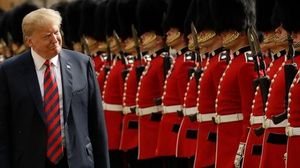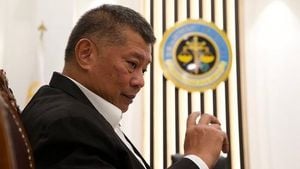The discovery of superconductivity at high temperatures has sparked remarkable interest within the scientific community, particularly when such phenomena arise under the pressures experienced by materials such as La3Ni2O7. Recent research sheds light on the intricacies of superconducting pairing symmetry—a property central to our comprehension of unconventional superconductors. Researchers employing density-functional theory (DFT), maximally-localized Wannier-function methods, and the random-phase approximation (RPA) have uncovered notable sensitivities within La3Ni2O7's electron structure.
The foundational study explores how the pairing symmetry of La3Ni2O7 exhibits a tendency to shift dramatically based on changes to the crystal field splitting of nickel's eg orbitals. Initially identified as having dxy symmetry at standard conditions, this symmetry demonstrates remarkable sensitivity; even slight increases (less than 0.2 eV) in the crystal field splitting can transition it to s± symmetry. This finding raises significant questions about earlier interpretations and models surrounding La3Ni2O7's superconducting properties.
La3Ni2O7 adds to the growing family of nickelate superconductors, recently identified to house superconductivity at temperatures nearing 80 K under extreme pressures. Prior findings have indicated substantial differences among theoretical predictions concerning the most likely pairing symmetries available, which reside at the heart of superconductivity mechanisms. A variety of models suggested contrasting symmetry behaviors reminiscent of other superconducting materials.
By pursuing their study, the researchers employed advanced computational techniques to dissect the pairing symmetry's dependence on low-energy electronic structures. They leveraged DFT to construct bilayer two-orbital models—designated as Wannier's model and Luo's model—which accurately reflect La3Ni2O7's underlying electronic structure, including notable features like the distinct three-sheet Fermi surface.
The results unveiled through these models revealed the delicate balance governing La3Ni2O7's behaviour: when using Wannier’s model, they found dxy symmetry serving as the most prominent binding state under regular conditions. Comparatively, Luo’s model yielded s± as the leading symmetry. This stark difference emphasizes the nuanced contribution crystal field splitting has on the superconducting state, stirring early debates on the physics behind superconductivity's nature.
The insights gained are not limited to theorizing La3Ni2O7’s behavior; they extend to informing future work with other unconventional superconductors. Indeed, the authors caution against the presumptions made during the downfolding process of DFT band structure calculations. Not only does this study provide clarity to La3Ni2O7's characteristics, but it also establishes pivotal criteria for investigating similarly complex superconductors by emphasizing the need for precision around effective models.
Consequently, the research invites both physicists and material scientists to reflect on the synthetic routes, manipulation of local environments, and potentials for tuning the electronic characteristics of materials like La3Ni2O7. Given the proximity of the observed crystal field splitting to the determined transition points for pairing symmetries, future investigations may explore practical adjustments to crystal structures, potentially leading to emergent superconducting phases.
These advancements not only enrich our scientific groundwork but also set the stage for promising experimental inquiries surrounding high-temperature superconductivity across various nickelate materials. The correlation found between crystal field variations and pairing symmetry dictates attention to electron interactions, solidifying La3Ni2O7's status as both a material of curiosity and practical significance within the superconductivity field.



